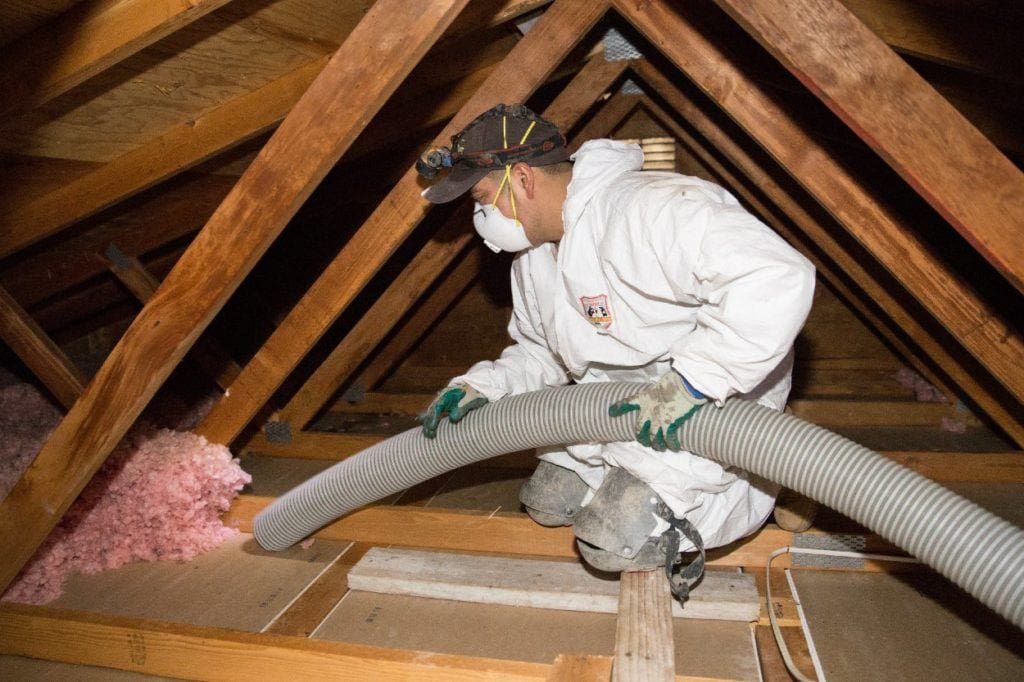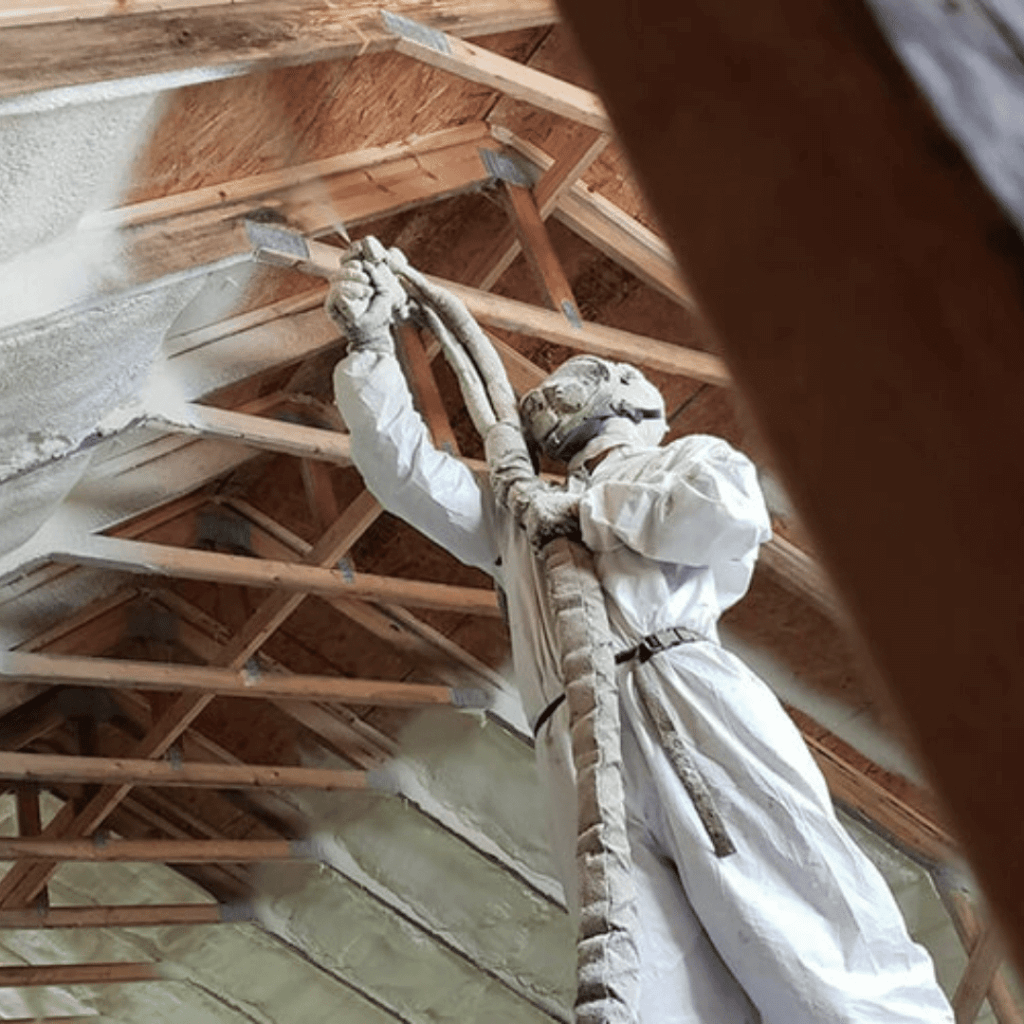Professional Tips for Enhancing Your Home with Attic Insulation DFW
Professional Tips for Enhancing Your Home with Attic Insulation DFW
Blog Article
Discover the Different Kinds of Attic Insulation and Their One-of-a-kind Advantages for Your Home's Energy Performance

Fiberglass Insulation
Fiberglass insulation is just one of the most generally used materials for attic room insulation as a result of its superb thermal performance and cost-effectiveness. Composed of little glass fibers, this product efficiently catches air, creating a shielding barrier that assists keep consistent indoor temperatures. Its high R-value per inch makes it especially effective at standing up to heat transfer, which is important for energy conservation in homes.
Installation of fiberglass insulation is fairly uncomplicated, usually available in batts or loose-fill kinds, fitting different attic room configurations. In addition, it is immune and non-combustible to wetness, lowering the threat of mold development. This sturdiness contributes to its durability, making fiberglass a feasible long-term investment for house owners.
Moreover, fiberglass insulation is often made from recycled products, which boosts its eco-friendliness. The product can likewise add to soundproofing, reducing sound transfer between spaces. While it is vital to wear protective gear throughout installment to prevent inflammation from the fibers, the general advantages of fiberglass insulation, consisting of energy financial savings and environmental considerations, make it a prominent selection for enhancing attic efficiency and advertising a comfortable living atmosphere.
Spray Foam Insulation
Spray foam insulation is a very efficient choice for attic insulation, known for its exceptional air sealing and thermal efficiency. This ingenious insulation product is composed of a mixture of isocyanate and polyol resin, which, when incorporated, increases swiftly to fill gaps and tooth cavities in the attic space. Its capability to comply with numerous surfaces makes sure a continual barrier versus air leaks, considerably lowering warmth loss during colder months and warmth gain during warmer seasons.
One of the crucial benefits of spray foam insulation is its high R-value per inch, which suggests it gives superb thermal resistance in a relatively slim application. This is especially beneficial in attic rooms where space is usually limited. Additionally, spray foam can help decrease dampness build-up, decreasing the threat of mold and mold growth, which can be harmful to both the framework and interior air high quality.
While the first cost of spray foam insulation may be greater than typical options, its lasting energy financial savings, combined with increased convenience and boosted home value, make it a worthwhile financial investment for homeowners seeking improved energy effectiveness. Attic Insulation DFW. In general, spray foam insulation attracts attention as an effective solution for maximizing attic room insulation
Cellulose Insulation

Cellulose insulation is a prominent selection for attic insulation, mostly composed of recycled paper items treated with fire retardants. This eco-friendly option is understood for its exceptional thermal performance, effectively minimizing heat transfer in both summer season and winter months. The dense composition of cellulose allows it to load voids and gaps in attic room rooms, offering a seamless barrier versus air leaks.
One of the substantial advantages of cellulose insulation is its ability to withstand mold and insects, owing to the fire resistant treatments utilized throughout production. In addition, it flaunts a high R-value per inch, which equates right into premium energy efficiency. House owners can expect reduced home heating and cooling costs as a result of improved insulation.
Installation is normally achieved via blowing loosened cellulose right into the desired location, enabling a effective and quick process. This approach additionally decreases disruption to the existing framework. Additionally, cellulose insulation has a relatively low ecological effect, as its production procedure makes use of recycled products, adding to lasting building practices.
Rock Wool Insulation
Among the different choices for attic insulation, rock wool, likewise referred to as mineral woollen, read this article stands out due to its excellent thermal and acoustic efficiency. Made from recycled or all-natural products, rock woollen is developed by melting rock and rotating it right into fibers, causing an item that uses superb insulation buildings.
Among the substantial benefits of rock wool insulation is its high R-value, which suggests its effectiveness in resisting warmth circulation. This particular not only improves energy efficiency however additionally adds to keeping a comfortable interior temperature level year-round. Additionally, rock woollen is naturally fire-resistant, making it a safer alternative for homes as it can hold up against heats without melting or launching hazardous fumes.
Moreover, rock wool insulation succeeds in soundproofing capabilities, properly minimizing sound transmission between areas and from outside resources. In general, rock wool insulation supplies an extensive remedy for enhancing power effectiveness, safety and security, and comfort in domestic setups.
Radiant Barrier Insulation
Radiant obstacle insulation functions as an efficient solution for reducing warm transfer in attic rooms, particularly in warmer climates. This sort of insulation works by mirroring glowing heat away from living spaces, consequently lowering the quantity of warmth that enters a home during hot weather condition - Attic Insulation DFW. Generally made their explanation up of an extremely reflective material, such as light weight aluminum foil, radiant obstacles are installed in attic rooms, dealing with the roof covering, where they can intercept inbound heat from the sunlight
The primary benefit of radiant obstacle insulation is its ability to lower air conditioning expenses. By showing warm instead of absorbing it, radiant barriers can help maintain a more secure interior temperature level, lowering the work on cooling systems. This performance converts right into reduced power bills additional info and boosted comfort for property owners.
Along with energy cost savings, radiant obstacles can additionally add to enhanced indoor air quality. By reducing heat buildup, they aid decrease moisture levels, which can prevent mold and mildew development and improve general air flow. When installed correctly, glowing obstacle insulation can be a very useful enhancement to any type of energy-efficient home, making it a worthy factor to consider for home owners aiming to improve their attic insulation approach.
Verdict
In verdict, comprehending the different kinds of attic insulation-- fiberglass, spray foam, cellulose, rock wool, and glowing obstacles-- enables house owners to make enlightened decisions concerning power performance. By picking the suitable insulation product, substantial decreases in power costs can be accomplished, along with improvements in interior comfort.

In verdict, comprehending the different types of attic insulation-- fiberglass, spray foam, cellulose, rock woollen, and radiant barriers-- allows house owners to make informed choices concerning energy effectiveness.
Report this page